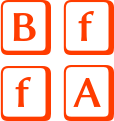This slideshow requires JavaScript.
We’re delighted to launch
Snow Crow, the sixth Bath Flash Fiction Anthology on Zoom on
Friday 4th February,7.30 pm – 9.30 pm GMT, two days before the deadline of our 20th Award where all fifty longlisted writers will have the opportunity to be published in the 2022 anthology, There are 136 stories in
Snow Crow , 300 words and under so we can only listen to a selection of them but it’s wonderful that many of the winners and commended writers from the three rounds of the 2021 Awards can come and read. ·
Those confirmed so far are first prize winners, Geeta Sankar, Dara Yen Elerath, Doug Ramspeck; Second prize winners, Emma Phillips and Jo Gatford; Third Prize winners Leonie Rowland and Tim Craig and commended writers, Sara Hills, Audrey Niven, Debra A Daniel, Chloe Banks and Regan Puckett. We’ll also hear stories from shortlisted and longlisted writers, Sage Tyrtle, Kathryn Aldridge Morris, Diane Simmons and Amy Barnes (plus a few more to come). Because the stories are all so short there’s room for around twenty-one readers altogether.
Snow Crow , the title taken from the October winning story by Doug Ramspeck was published by Ad Hoc Fiction, just before Christmas and has arrived in many different countries so far. We know it hasn’t quite reached some parts of Canada yet. Thank you to everyone on social media who’s showed us the book in different locations around the world.
In the slide show above, we have authors posed with their copy of the book; books posed with decorative Christmas and other birds (including crows, ravens, robins and parrots; books in snowy and other locations; books in offices and on tables; in line=ups with other anthologies; a book partially eaten by a dog (plus a picture of the dog!) a book showing a map of its impending travels from an author couple who both had a piece in the book. We also have samples of a few stories among the slides. If we’ve missed off your picture, please let us know and we can add it in.
we can add it in.
Here’s a new one just arrived from Antionette Bauer in Australia
At the launch there’ll be three reading slots to hear the stories from each round of the Award, break out groups for chats and a book giveaway. A fantastic selection from an anthology of really wonderful pieces. The launch is hosted by BFFA founder, Jude Higgins, and everyone is welcome. To get a zoom link email Jude {at} Judehiggins {dot} com asap, We look forward to seeing you there!



 Our 21st £1460 prize fund Award closes this Sunday, 5th June, midnight GMT. And whether you are polishing an entry for the competition, about to write one last minute, or thinking about other submission opportunities, here are some excellent tips on writing micros from our judge
Our 21st £1460 prize fund Award closes this Sunday, 5th June, midnight GMT. And whether you are polishing an entry for the competition, about to write one last minute, or thinking about other submission opportunities, here are some excellent tips on writing micros from our judge

 Huge congratulations to
Huge congratulations to
 It is such a well-deserved win and The Evolution of Birds demonstrates all that is best about flash fiction. We
It is such a well-deserved win and The Evolution of Birds demonstrates all that is best about flash fiction. We  Michael Loveday’s new guidebook, Unlocking the Novella in Flash – from blank page to finished manuscript is published on May 17th by Ad Hoc Fiction, the third in their guide book series. It is currently available (until publication day) with a 25% discount from
Michael Loveday’s new guidebook, Unlocking the Novella in Flash – from blank page to finished manuscript is published on May 17th by Ad Hoc Fiction, the third in their guide book series. It is currently available (until publication day) with a 25% discount from  In this interview, first prize winning writer, Louise Mangos from our twentieth Award,
In this interview, first prize winning writer, Louise Mangos from our twentieth Award,  Robin Thomas’s novella-in- flash fragments, Margot and The Strange Objects is
Robin Thomas’s novella-in- flash fragments, Margot and The Strange Objects is 



 David Rhymes lives in Navarra, Spain. He grew up in Nottingham and has a degree in English Literature from the University of Warwick and an MA in Creative Writing from the University of East Anglia. He earns his living as a freelance translator, trainer, and instructional designer.
David Rhymes lives in Navarra, Spain. He grew up in Nottingham and has a degree in English Literature from the University of Warwick and an MA in Creative Writing from the University of East Anglia. He earns his living as a freelance translator, trainer, and instructional designer.
 The fourth in our series of prompts from
The fourth in our series of prompts from
 we can add it in.
we can add it in.